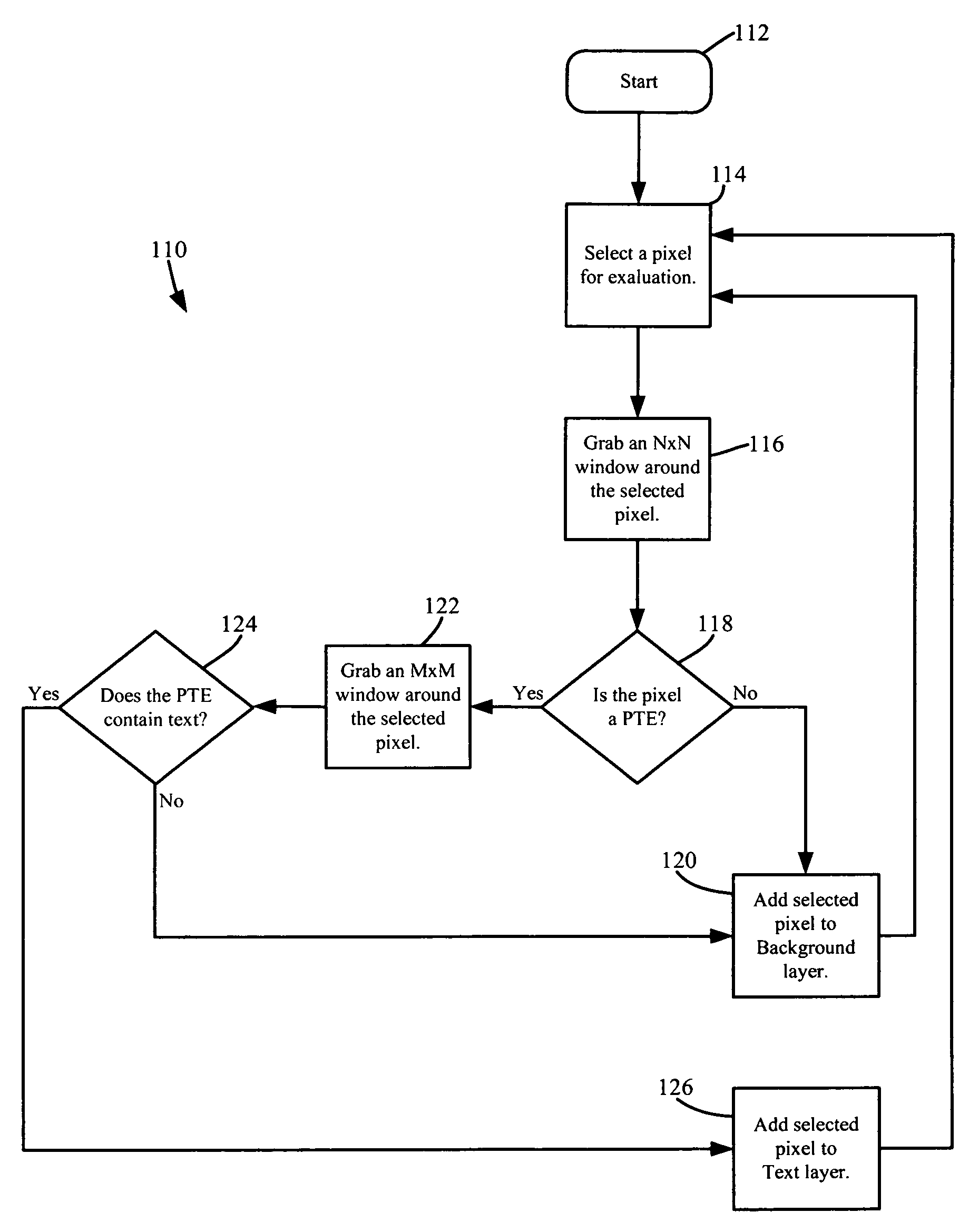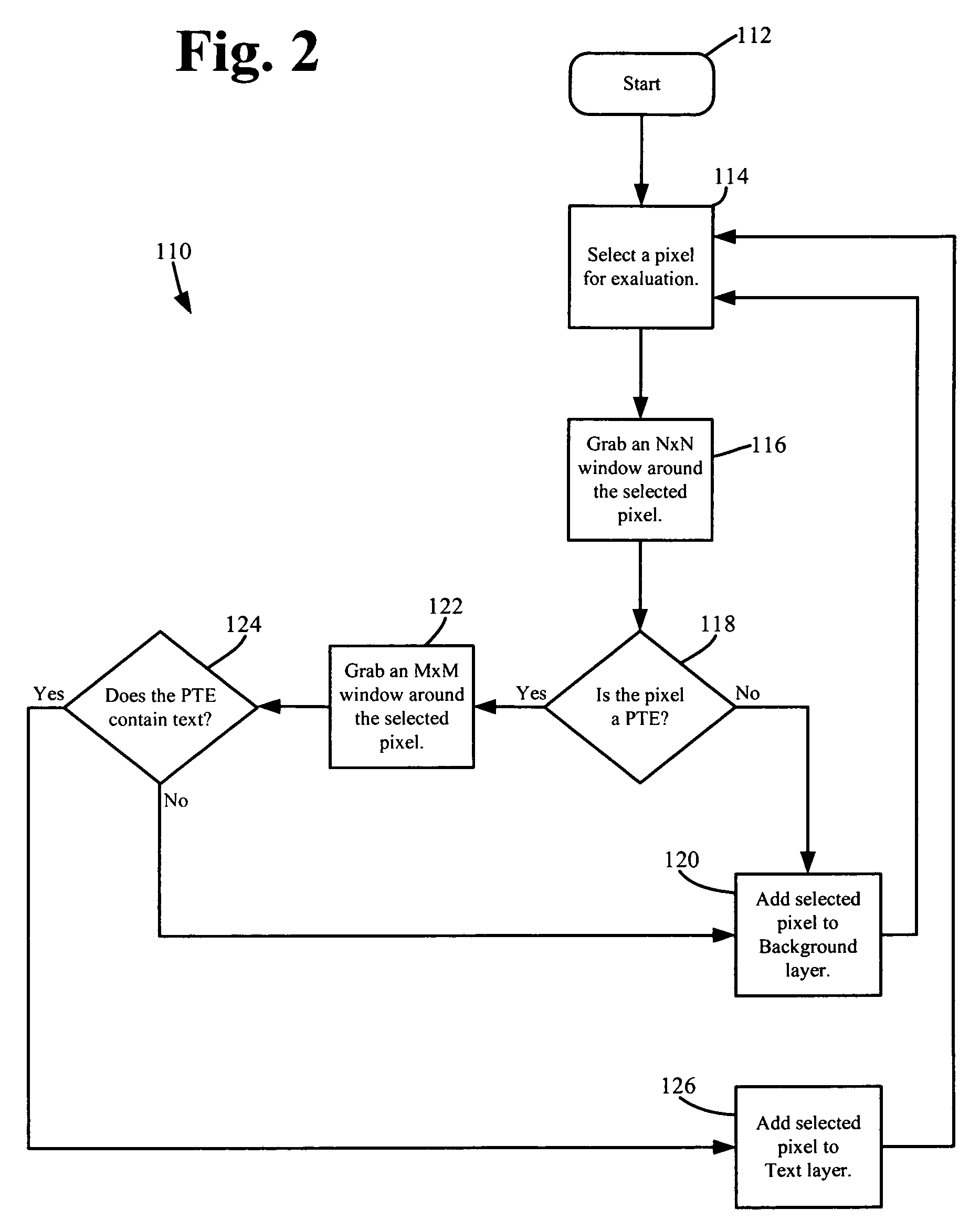Document segmentation for mixed raster content representation
a mixed raster content and segmentation technology, applied in the field of compression techniques, can solve the problems of information loss, less than perfect reproduction of original images, and data reduction levels
- Summary
- Abstract
- Description
- Claims
- Application Information
AI Technical Summary
Benefits of technology
Problems solved by technology
Method used
Image
Examples
Embodiment Construction
[0016]As shown in FIG. 1, a document may be represented as a pixel array 100 having X number of rows and Y number of columns. For example, as shown in FIG. 1, the pixel array 100 may include 19 rows of pixels (i.e., rows 1 to 19 in FIG. 1) and 19 columns of pixels (i.e., columns A to S in FIG. 1) for a total of 361 pixels. Thus, when a document is being segmented and compressed, each pixel must be segmented to one of at least two layers. In one aspect, each pixel may be segmented to either a background layer, a foreground layer or a text layer. In another aspect, each pixel may be segmented to either a background layer or a text layer.
[0017]As shown in FIG. 2, the segmentation method, generally designated 110, may begin at box 112. As shown at box 114, a pixel may be selected from the pixel array 100 for evaluation and segmentation. For example, referring to FIG. 1, the segmentation method 110 may select pixel J-10 (i.e., the pixel located at row 10 of column J), designated as pixel...
PUM
 Login to View More
Login to View More Abstract
Description
Claims
Application Information
 Login to View More
Login to View More - R&D
- Intellectual Property
- Life Sciences
- Materials
- Tech Scout
- Unparalleled Data Quality
- Higher Quality Content
- 60% Fewer Hallucinations
Browse by: Latest US Patents, China's latest patents, Technical Efficacy Thesaurus, Application Domain, Technology Topic, Popular Technical Reports.
© 2025 PatSnap. All rights reserved.Legal|Privacy policy|Modern Slavery Act Transparency Statement|Sitemap|About US| Contact US: help@patsnap.com



